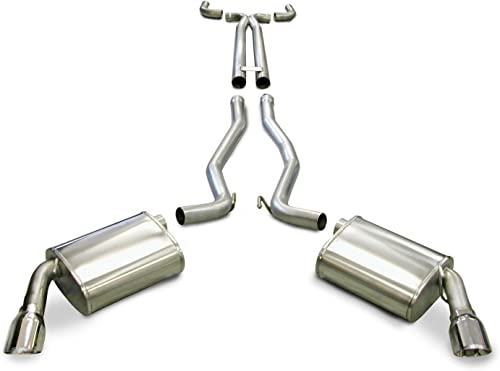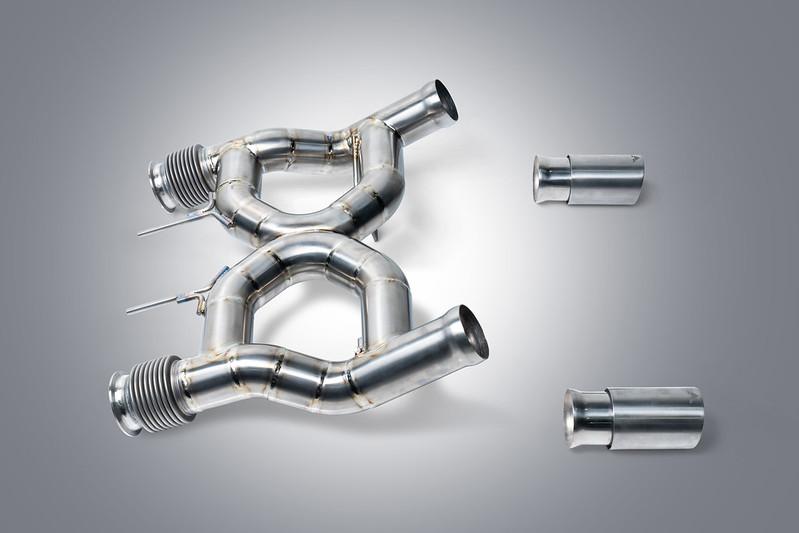The three main components of an exhaust system are the manifold, catalytic converter, and muffler. The manifold collects the gases from the engine and directs them into the catalytic converter. The catalytic converter uses a catalyst to change the emissions from the engine into less harmful gases. The muffler reduces noise from the exhaust system.
In order for an engine to run, the exhaust is necessary. Exhaust gas is created when the fuel in the cylinders combusts. Each part serves a specific function in order to make sure the vehicle runs smoothly and quietly. Let’s take a closer look at each part and what it does.
What Does an Exhaust System Do?

Exhaust systems pipe the harmful exhaust fumes away from the engine and the cabin. The fumes contain carbon monoxide, nitrogen oxide, and hydrocarbons, all of which can be dangerous to your health.
Exhaust systems also help improve engine performance by reducing back pressure on the engine. This means that the engine doesn’t have to work as hard to push the exhaust gases out, which can lead to improved fuel economy and performance.
There are three major components of exhaust.
- Manifold
- Catalytic converter
- Muffler
How Do These Parts Work On Exhaust?
Parts of an exhaust system vary in their complexity. Understanding how these parts work will help you troubleshoot any problems that may occur. Here, we’ll discuss the basics of how each exhaust component works. We’ll also provide tips on how to care for your exhaust system to ensure optimal performance.
1. Manifold
Exhaust manifolds route exhaust gases from the cylinders of a multi-cylinder engine to the exhaust pipe. They are typically made of cast iron and have passages that allow the exhaust gases from each cylinder to flow into the manifold. The manifold collects the exhaust gases from all of the cylinders and directs them into the single exhaust pipe.
The primary function of an exhaust manifold is to collect the exhaust gas from multiple cylinders and combine it into a single stream before exhausting it through the exhaust pipe. This reduces turbulence and helps improve engine performance. Exhaust manifolds can also be designed to improve scavenging, which is the process of drawing spent air out of the cylinders and replacing it with fresh air for combustion.
2. Catalytic Converter
Catalytic converters work to reduce emissions from a vehicle by converting toxic gases into less harmful ones. The basic principle behind their operation is the catalytic oxidation of carbon monoxide and hydrocarbons.
The inside of a catalytic converter is lined with a honeycomb-shaped matrix of precious metals (usually platinum, palladium, and rhodium). When exhaust gas flows through the converter, the heat of the exhaust gas causes the precious metals to become very hot. At these high temperatures, the metals act as catalysts and start to break down the carbon monoxide and hydrocarbons into carbon dioxide and water vapor.
3. Muffler
Exhaust mufflers play an important role in reducing exhaust noise and emissions from a vehicle. By trapping sound waves and redirecting them through perforations or baffles, mufflers help to reduce the overall noise level emitted by the engine. In addition, mufflers also help to clean up the exhaust stream by trapping harmful gases and pollutants before they can escape into the atmosphere.
Muffler design can vary depending on the type of engine and vehicle, but most mufflers consist of a pipe encased in a cylindrical housing with perforations or baffles along the length of the pipe. When exhaust gas passes through these perforations or baffles, it is slowed down and forced to swirl around inside the housing.
How to Take the Care Exhaust System
The best way to take care of your exhaust system is by regularly inspecting it for damage and cleaning it as necessary.
Exhaust systems should be inspected every time you have your car serviced, and they should also be cleaned on a regular basis. Most auto shops offer a cleaning service that will remove all the built-up gunk and grime from your exhaust system.
If you notice any damage to your exhaust system, be sure to have it repaired right away. Damaged exhaust systems can cause serious problems with your car’s engine and can even be dangerous.
For the best performance out of your exhaust system, it’s important that you maintain its full functionality. Maintaining these few things will ensure this process goes smoothly and without issue.
- When you notice a strange odor coming from your car’s exhaust system, it could mean one thing- that there is an issue with how efficiently the engine gets rid of harmful gases and odors.
- Cracks in the head of an engine can lead to rapid overheating.
- Hissing or cracking sounds could mean there’s a leak in the system. It might also be an indicator that you need to replace your muffler, so make sure it’s replaced before anything else.
- Have you noticed that your car is less efficient when powering up? This could be due to a functioning oxygen sensor.
The exhaust system on your car is like the blood-brain barrier for cars. It’s responsible for carrying deadly gases away from you and keeping an efficient running, so it’s very important that drivers pay attention or they might end up as one of those statistics we all try our hardest to avoid.

